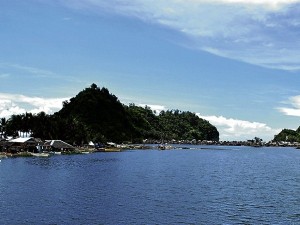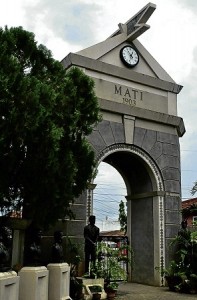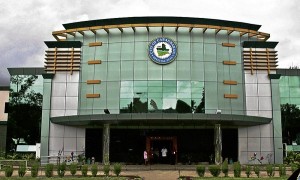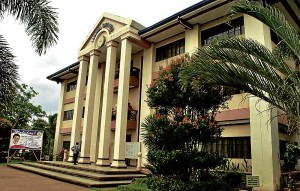Mindanao’s new lands of promise
For decades, Mindanao, the country’s biggest island group, has been given this moniker because of its vast fertile land, scintillating sights and diverse natural wonders.
This calling still holds true today with its continuing march to economic progress, especially with the proclamation of five new component cities.
These new urban centers—Bayugan (Agusan del Sur), Cabadbaran (Agusan del Norte), Tandag (Surigao del Sur), Mati (Davao Oriental) and Lamitan (Basilan) are expected to further spur development and continue fulfilling the promise that is Mindanao.
After a rough sailing that saw their cityhood nullified and restored twice since 2007, these are full-pledged cities after their status have been finally affirmed by the Supreme Court.
Bayugan
Article continues after this advertisementThe crossroad city of Bayugan is the commercial center of northern Agusan del Sur, and the confluence of five neighboring towns. Its strategic location between Butuan and Davao cities further adds economic value to its status as a vital go-between.
Article continues after this advertisementIt boasts of 5,000 hectares of rice fields, the biggest in the Caraga Region, 700 hectares of palm oil plantation 1,000 has rubber plantation, and 1,000 hectares of corn and falcata tree farms making it an agricultural powerhouse.
Due to its role as trading center, regional retail giants such as Gaisano and NCCC, commercial banks, and property developers are poised to enter the city.
With an P482.9 million internal revenue allocation (IRA) this year, Bayugan will further strengthen its agro-industrial sector, and develop of the culture of entrepreneurship, one of Bayugeños strongest traits.
Tourism-wise, the city has identified potential attractions, most of them waterfalls located in the city’s mountainous areas which are largely untapped by human hands and are authentic adventure destinations.
The city recently launched the Bayug Festival to embody its history and aspirations, which the local government hopes to be a major tourist drawer in the near future.
Tandag
The capital of Surigao del Sur, Tandag boasts of a checkered history being once the seat of government of the unified Spanish-era Surigao province.
“In our Annual Investment Plan for 2012, we aim to make the city a cottage industry capital and a leading eco-tourism destination in the Caraga region.” says Tandag Mayor Alexander Pimentel.
With a P279-million IRA this year, the city has prioritized funding for barangay development by earmarking P1 million annually for projects, and general social services such as Philhealth coverage and birthing for the poor, potable water, and financial assistance to indigents and elderly.
While still primarily agricultural, the city is Surigao del Sur’s commercial hub and service area for the province’s emerging tourism industry. Thrice weekly flights from Cebu via Mid-Sea Express have made the city more accessible and have brought back life to the once dormant airport.
Pimentel says that as a result of its cityhood, Tandag is investing in education as it increased the number of college scholars from 70 to 500 students who receive P3,000 financial assistance per semester. It has also hiked from 100 to 500 the number of students enlisted for summer jobs.
To harness its human resources, barangay health workers and tanod (watchmen) receive additional honorarium from the city government. The city also conducts training in coordination with Tesda skills for all sorts of which has provided overseas employment.
To lure potential investors, the City has crafted an Investment Code which accords investors pouring in P5 million and above a five-year tax holiday.
On the tourism front, Twin Linungao Island, the city’s iconic rock formation, will be developed into an ecopark, complemented by the construction of the Baywalk Boulevard.
Also in the pipeline is the relocation of some 1,200 informal settler families in a 16-hectare self-contained community.
Cabadbaran City
A vital highway town in northern Mindanao, Cabadbaran’s dream of becoming a city got a boost when it was declared the provincial capital of Agusan del Norte in 2000 after Butuan achieved a highly urbanized city status.
Mayor Dale Corvera says that the mixture of agro-industry, gold and copper mining, educational and commercial activities, and major investments bode well for this flourishing urban center.
Discovering the potential of abaca farming, Cabadbaran has put in P5 million for abaca production, and has made it its One Town, One Product (OTOP) showpiece. Despite not being endemic to the area, the city has effectively multiplied its abaca twining from 20 to 356 hectares.
He reveals that Filinvest Development Corp. is putting up a 20-megawatt hybrid power plant which utilizes diesel and rice hull, which will dramatically bring down the energy cost to P6/kwh.
This new investment, he says, will bring in realty taxes, direct and indirect employment, as well as micro-businesses to the locals.
Corvera says that cityhood has enabled Cabadbaran to extend P 2,000 cash incentives and daily vitamins to senior citizens, funeral services, and Philhealth coverage for 6,000 indigent households.
Believing in the value of education, the city supports 70 public elementary and high school teachers, and operates a local high school, which has produced 100 graduates so far.
He adds that the city is strengthening its capability to raise revenues through efficient management of its local economic enterprises such as the public market, transport terminal and a triple A slaughterhouse as rated by the National Meat Inspection Service.
As a testament to good governance, Cabadbaran has received the DILG Seal of Good Housekeeping in 2011, and the Bureau of Local Government Finance Achiever’s Award in recognition of its accomplishment in revenue generation resulting in collection efficiency from 2008 to 2011 among the LGUs in the region.
It is also among the LGU recipients compliant to the criteria of good governance of the National Anti-Poverty Commission.
It is also home to the country’s most successful artificial fish sanctuary which restored 76 species of marine life, according to Mindanao State University.




